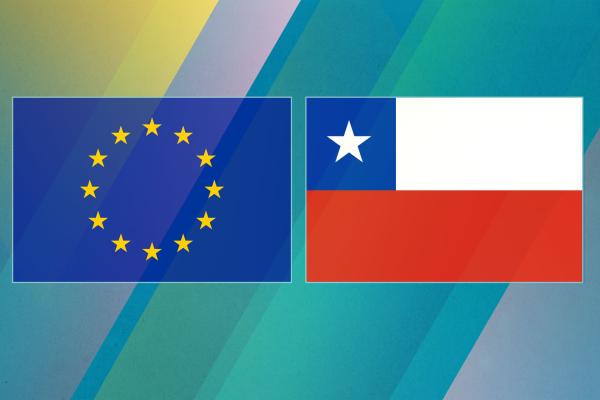- Country or region
- Chile
- Trade topics
- Negotiations and agreements
- Trade policy
The EU’s bilateral trade relations with Chile are governed by the EU-Chile Interim Trade Agreement (ITA), which entered into force on 1 February 2025 following the completion of Chile’s ratification process. The ITA, which was signed in December 2023, is of key geopolitical importance. It will boost the competitiveness of businesses on both sides, while providing a shared platform for the development of our net-zero economies.
This work will be further underpinned by ongoing initiatives under the Global Gateway, such as the development of critical raw materials value chains for lithium and copper, and the production of green hydrogen in Chile.
The agreement will enable the EU and Chile to cooperate as like-minded, lasting partners on global challenges, such as the de-risking of supply chains and the fight against climate change. In addition, it will boost the EU-Chile privileged partnership and put shared values at the core of bilateral relations, including major commitments and dedicated provisions on sustainable trade and gender equality.
Trade picture
- The EU is Chile's third-largest trade partner, comprising some 10% of Chile's total trade in 2023.
- The EU is Chile's third-largest import supplier and Chile's third-largest export market, after China and the United States.
- In 2023, the EU's main imports from Chile were vegetable products (39%), mineral products (20%), and base metals (21%).
- The EU's main exports to Chile in 2023 were machinery (27%), chemical products (18%) and transport equipment (17%).
The EU and Chile
From 2017-2022, the EU and Chile negotiated the modernisation of the EU-Chile Association Agreement, which has been in force since 2003. The parties reached the political conclusion of the negotiations on 9 December 2022 and signed the modernised agreement on 13 December 2023.
The modernised EU-Chile Agreement is composed of two parallel legal instruments:
- the Advanced Framework Agreement (AFA), that includes a) the Political and Cooperation pillar, and b) the Trade and Investment pillar (inclusive of investment protection provisions), subject to ratification by all Member States, and;
- the Interim Trade Agreement (ITA) covering only those parts of the trade and investment pillar of the AFA that are of EU exclusive competence (i.e. not including the investment protection provisions), adopted through the EU-only ratification process.
While the ITA is now in force, the AFA will enter into force when all EU Member States have completed their respective ratification processes. The ITA will then cease to exist and will be replaced by the AFA.
The EU-Chile ITA removes most remaining trade tariffs on goods, facilitates increased trade in services, and makes it easier for small companies to do business between the EU and Chile.
For more information:
- EU-Chile Interim Trade Agreement
- Negotiating directives adopted by the Council in November 2017 outline the scope of the recent negotiations
- Draft negotiating mandate, May 2017
- EU initial textual proposals for the modernisation negotiations & round reports
- Sustainability Impact Assessments in support of negotiations for the modernisation of the trade part of the Association Agreement with Chile
Trading with Chile
- Importing into the EU from Chile
- EU trade defence measures on imports from Chile
- Exporting from the EU to Chile
- Access2Markets: Information on the EU-Chile ITA
- Trade relations are part of the EU's overall political and economic relations with Chile
- Chile is a member of the World Trade Organization
Exporters' stories

The 2003 EU-Chile trade deal cut import taxes and other trade barriers. This enabled French water treatment firm, Eau Pure, to enter the Chilean market, doubling turnover in two years. The workforce has also grown from 10 to 20 employees.
Latest news
The EU-Chile Interim Trade Agreement (ITA) has entered into force, following the completion of Chile's ratification process. The ITA, which was signed in December 2023, is of key geopolitical importance.
The EU and Chile have today signed an Advanced Framework Agreement and an Interim Trade Agreement to strengthen political cooperation and foster trade and investment.
Today, the European Union and Chile have concluded negotiations on the EU-Chile Advanced Framework Agreement.

